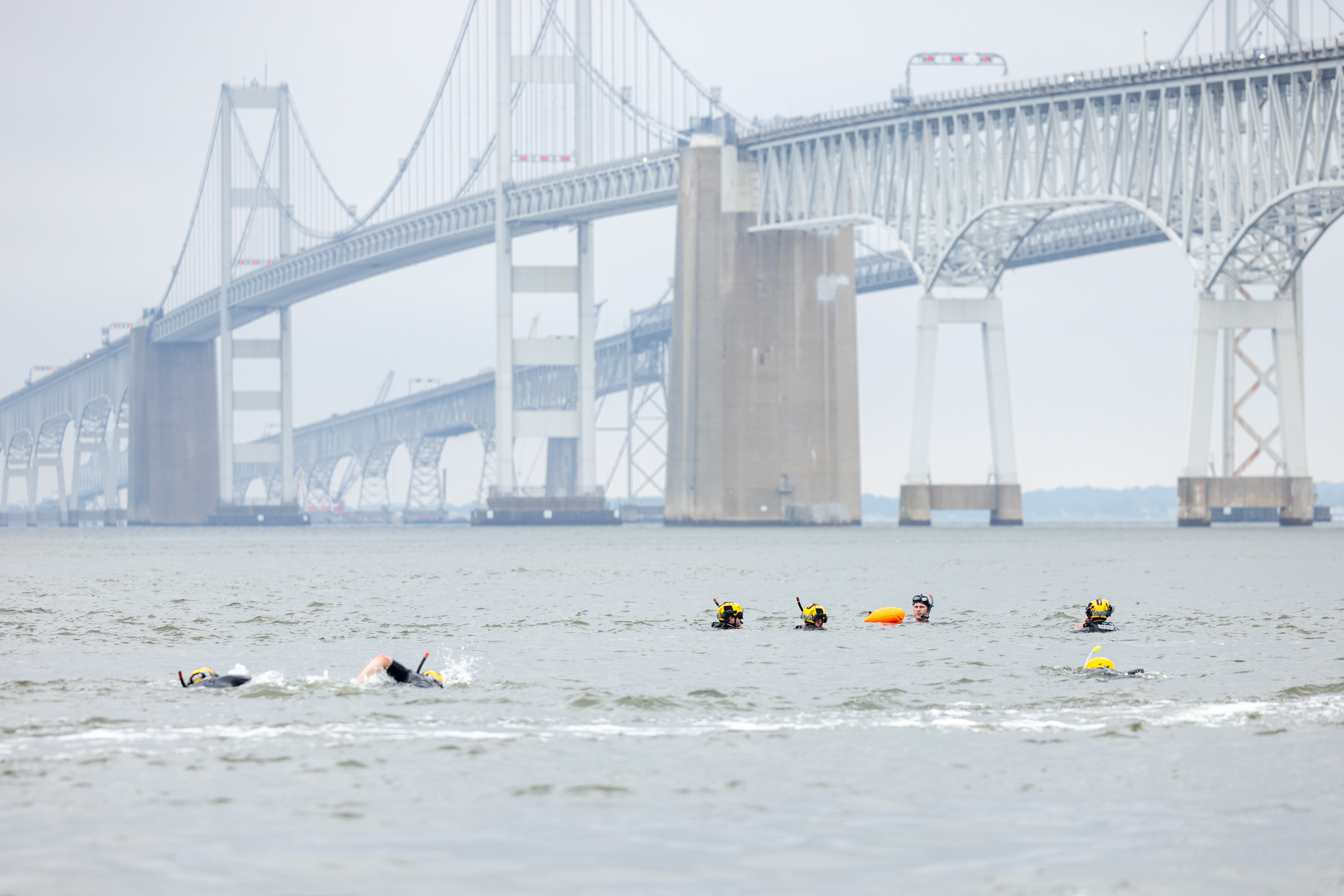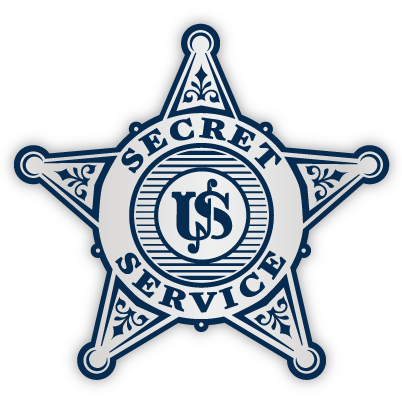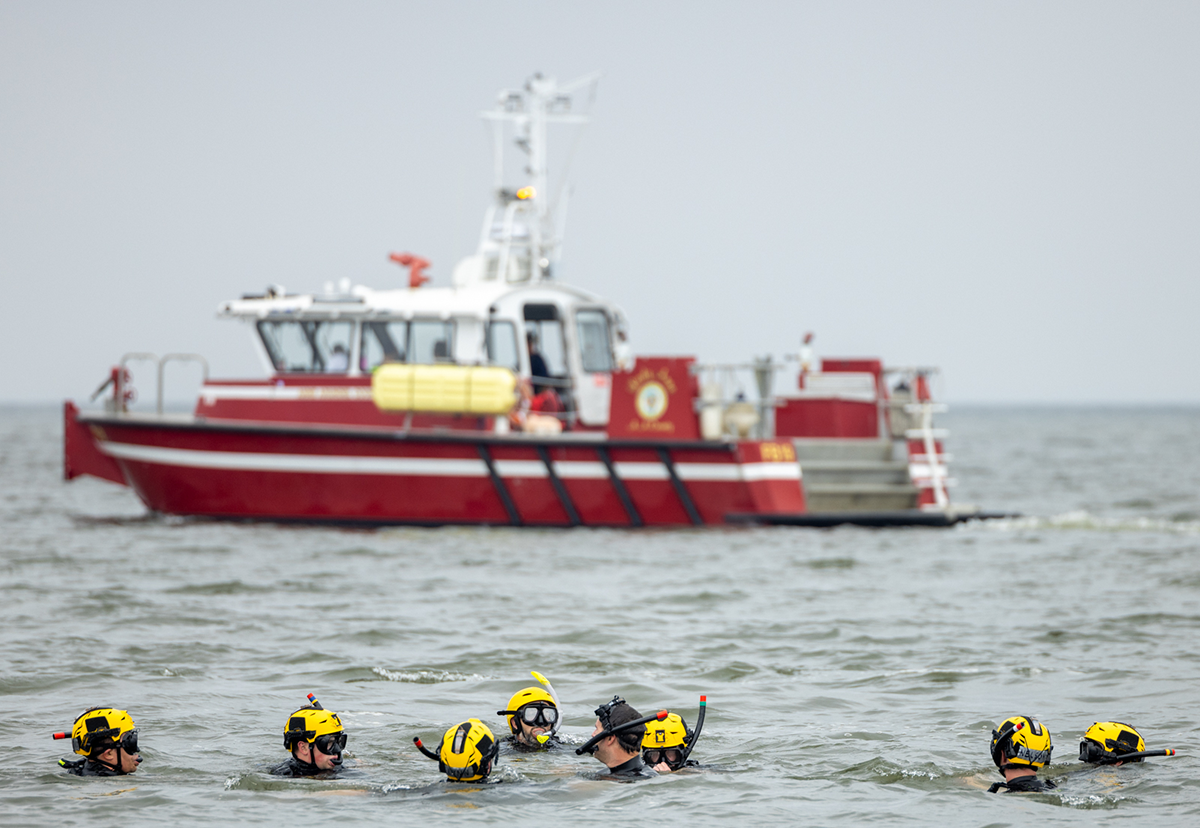
BELTSVILLE, MD - Sitting beside the aquatic training tank at the United States Secret Service’s James J. Rowley Training Center, Senior Special Agent Vince Seymour looked across lanes of perfectly pristine water and noted its unusual stillness.
Normally, the indoor facility is full of some of the bravest men and women the country has to offer - wanting to jump into an ocean, bay, river, or sea to save lives. Their drive for training is what attracts them to the tank where they take part in deep-water bobbing, swimming long distances with submerged dive bricks, and timed surface and underwater swims.
“’Man, that is really hard!’ is what we get a lot,” Seymour said.
Seymour, 45, leads one of the most exclusive groups within the Secret Service – The Rescue Swimmers and Divers.
“In the U.S. government, outside of the U.S. Military, we are really one of the only agencies that has rescue swimmers that have capabilities across the board. I think you’ll find a lot of agencies out there like, ‘Hey, they can do swift water or they can do surf rescue’. But you don’t see a lot of agencies that can do, comprehensively, what we do,” Seymour said. “Really, our mission is to save [protectees] before something bad happens.”
The Rescue Swimmers and Divers fall under the agency’s Water Safety Program.
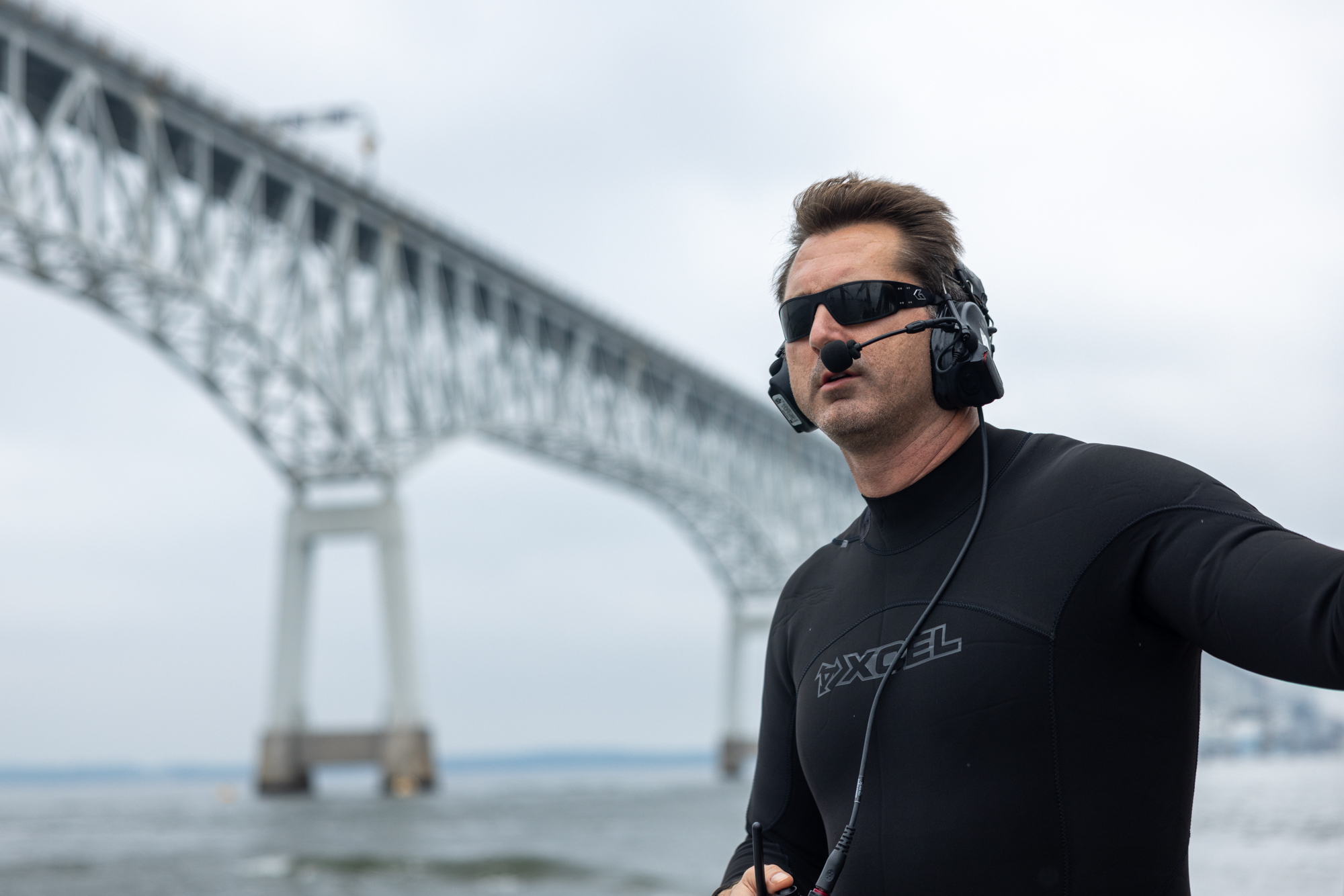
Since its founding in the early 1990s, more than 200 swimmers have graduated the Rescue Swimmer Program. Eighty-five still work in the Secret Service.
“Within that we sit at 53 agents and officers, that are ready, certified, who can go out on assignment right now,” Seymour said, adding that about 10 additional Rescue Divers also are certified for assignments.
President George H. W. Bush was an avid boating enthusiast and is responsible, in part, for launching the Rescue Swimmer and Diver teams more than 30 years ago. He liked going out on the water for fishing and other activities. At the time, the Secret Service relied heavily on the Coast Guard to ensure the President’s safety. The Service wanted its own unit to safeguard the President on the water.
Being a Rescue Swimmer or Rescue Diver isn’t a full-time job. It is considered a collateral duty. These agents and officers are out in the field throughout the world until called for a protective water mission. If a protectee wants to go boating, kayaking, paddle-boarding or swimming in open water, a Rescue Swimmer or Diver team is assigned.
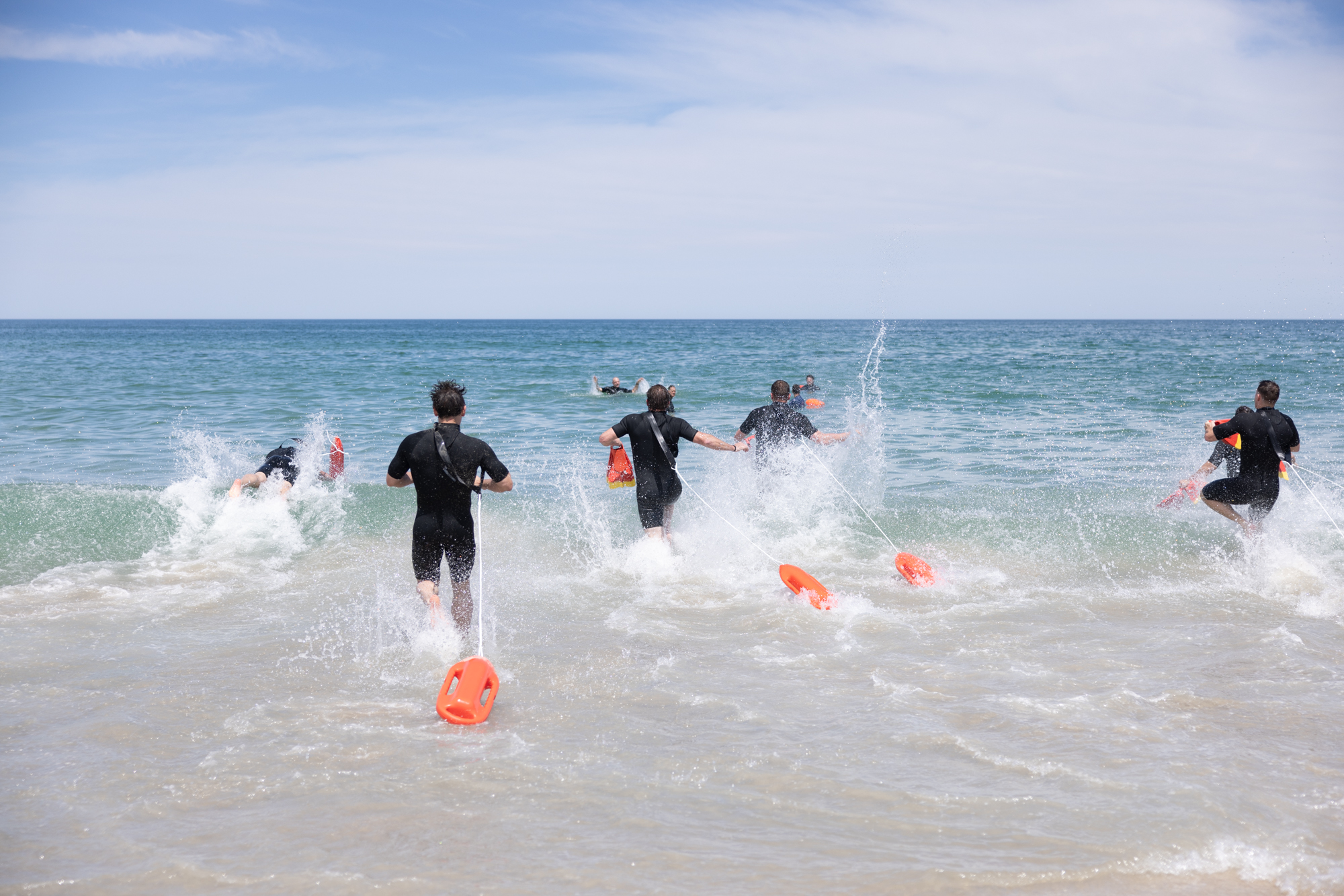
“For us, the idea is we’re already there,” Seymour said. “We are accompanying. So, if you get in any trouble - if you are in a rip current or you’re underwater and you are having a malfunction with your regulator - our job is to help you then and there.”
Trouble found Special Agent and Rescue Swimmer Joseph Akos Jr. while on a protective assignment at a Hawaii beach. Akos was scheduled to work a temporary assignment as a Rescue Swimmer and Shift Agent. While on the job, he noticed a young man in a small group nearby struggling in the water and ultimately falling below the surface. Akos recognized the young man needed help.
“Due to how far out we were, he was completely exhausted and unable to really assist at that time and not really able to help himself,” said Akos, who now works at the Tallahassee Resident Office. “At that moment it was verbally trying to encourage him and then to stay on course for getting us back to the shore.”
Akos grabbed the young man and pulled him through the rough chop and breaking waves until they were close enough to wade ashore.
“During the moment it was, ‘just keep kicking’,” Akos said.
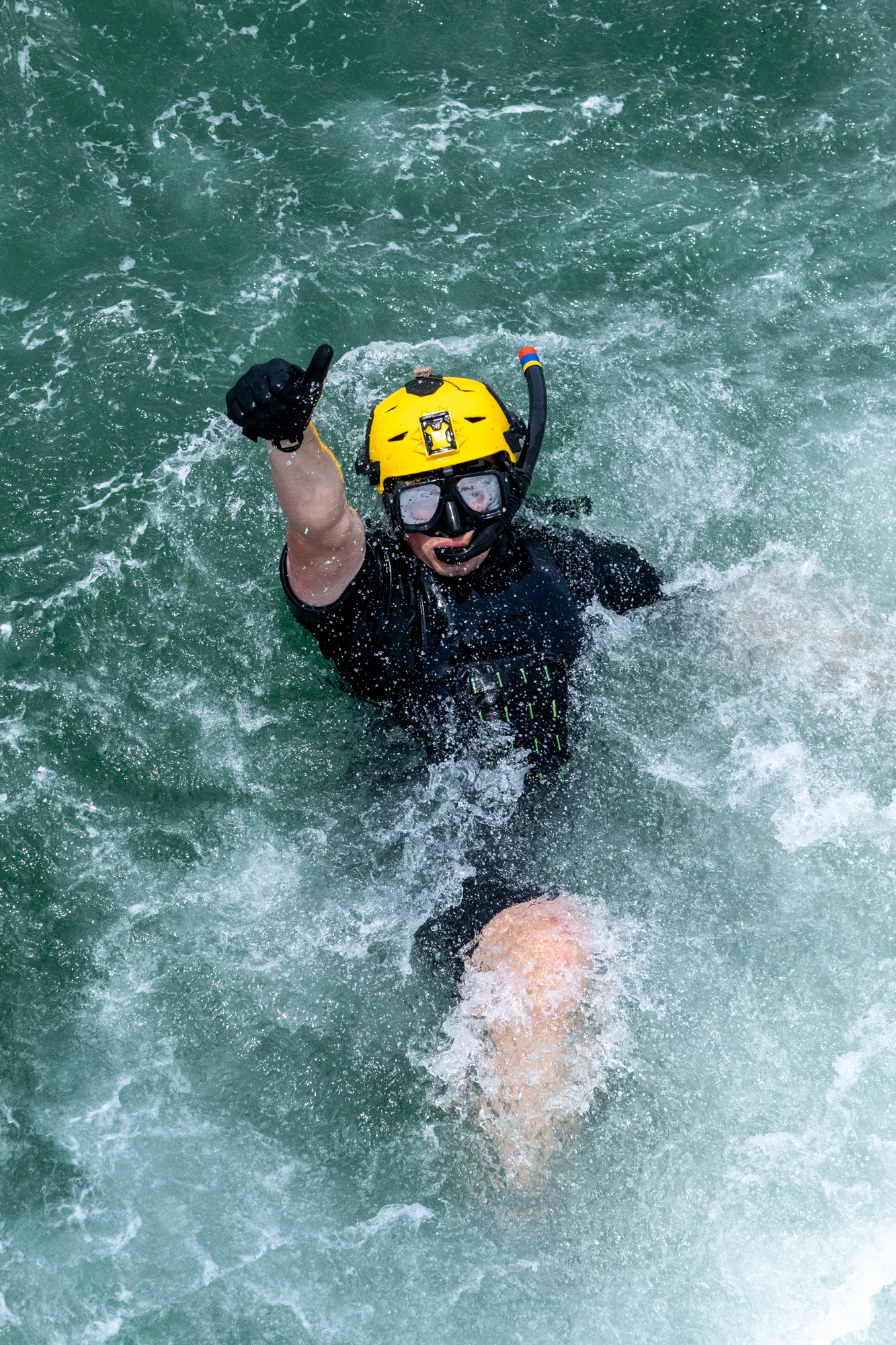
Because of his actions, Akos was given the Secret Service Director’s Lifesaving Award in January 2023.
He ranks the life-saving event in Hawaii among the top memories of his 12-year career.
“I was fortunate enough to have the right training and the right equipment with me that made that a successful day for all of us involved,” Akos said.
“Even though he wasn’t a protectee, he was still somebody’s kid, in that moment, that needed help,” Akos said. “And I think we were just fortunate that we had ourselves in a position and in the right spot, with the right training, to be able to make that day successful.”
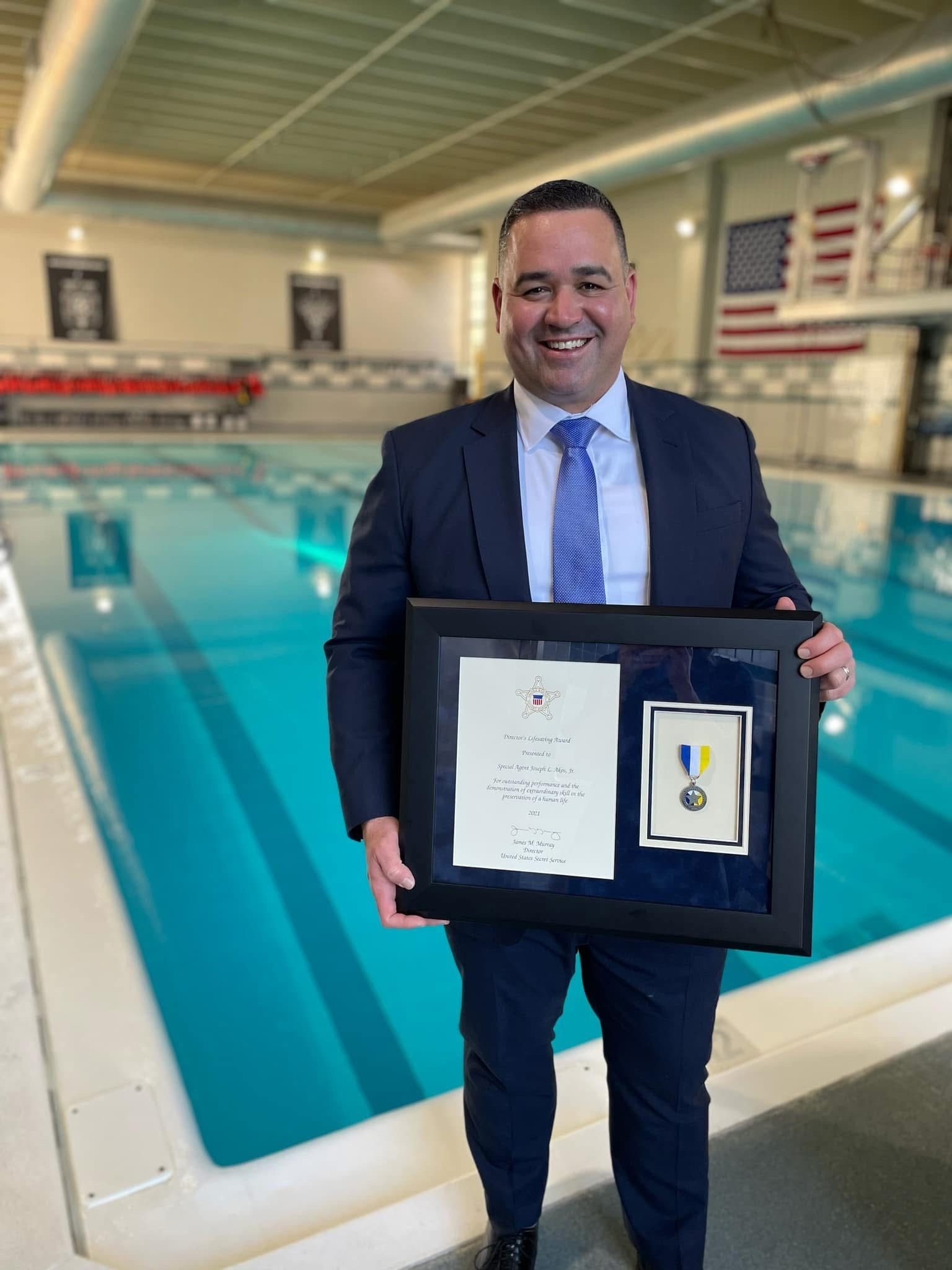
Of course, Akos, like his Rescue Swimmer counterparts, was formally trained at the Rowley Training Center. But it’s not only the Rescue Swimmers and Divers using the facility’s tank, during any given week Seymour and his team of instructors teach basic water survival classes to Special Agent and Uniformed Division recruits.
They also teach federal and local partners like the Anne Arundel County (Md.) Fire Department, FBI, and Marine Helicopter Squadron One (HMX Marines).
That training and the importance of what Seymour’s team does for those outside of the Secret Service was never more glaring than when tragedy unfolded in the air and in the water in Washington, D.C. earlier this year.
An Army Black Hawk helicopter collided with American Airlines Flight 5342 in midair near Ronald Reagan National Airport on Jan. 29. Both aircraft fell into the Potomac River below, killing 67 people.
The Secret Service lost one of its own in a helicopter crash more than five decades earlier.
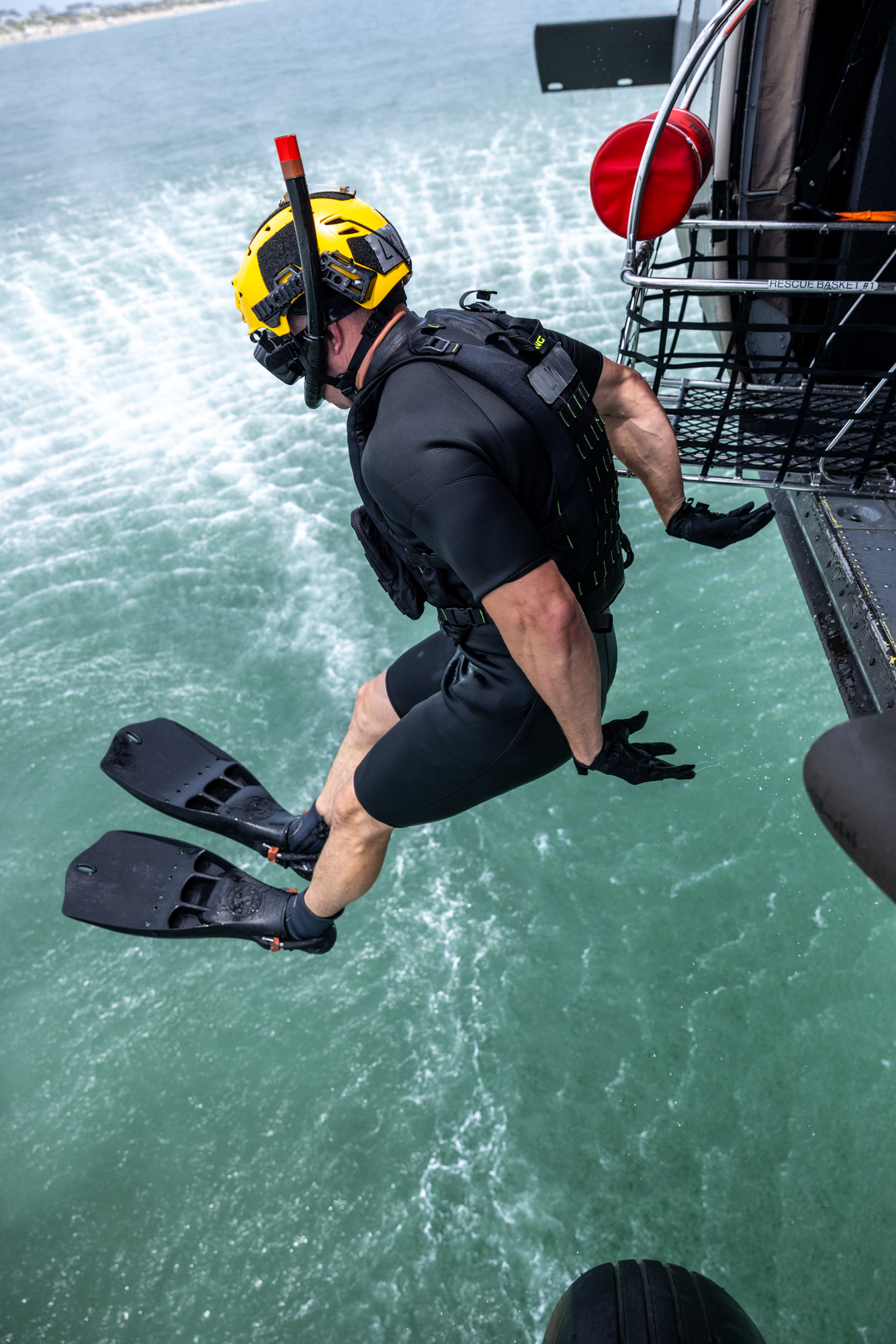
Special Agent Joseph Clifford Dietrich, 25, died when a presidential helicopter bound for the island of Grand Cay, Bahamas, crashed at sea on May 26, 1973. The pilot, co-pilot, crew chief and seven members of the agency’s Presidential Protection Division were aboard when the helicopter went into the water.
Dietrich was killed in the crash, which was later blamed on a mechanical failure. The helicopter crashed approximately 250 yards ahead of its landing pad. Dietrich became trapped inside the submerged aircraft and drowned.
Seymour said that event was the impetus of the creation of the agency’s Water Safety Program.
“Now when we teach this, I make it a point - I have a bunch of slides up here that I go through - I show the pictures and what happened to really get it in the agents’ and officers’ minds like, ‘Hey, this can happen’.”
Becoming a member of the Rescue Swimmer team is an intense process. Special Agents and Uniformed Division Officers must pass an in-water and on-land pre-test to advance to a three-day selection course, which is slated for up to 18 participants. Seymour describes the selection course as both physically and mentally strenuous.
If selected, the next stop is Emergency Medical Technician (EMT) school. Then, a national registry EMT test before the actual Rescue Swimmer School. The Rescue Swimmer Basic Course lasts about five weeks.
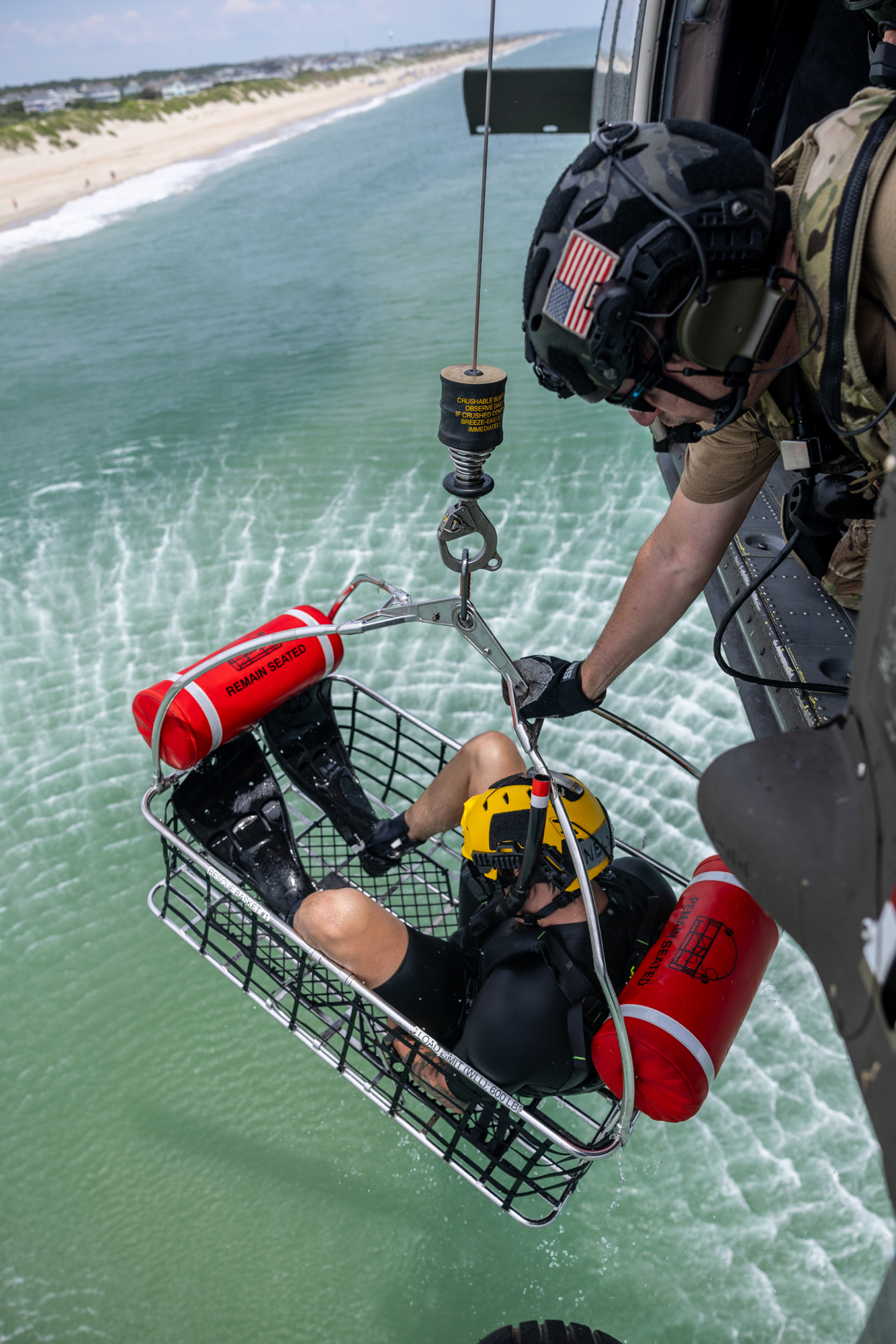
“It will be one of the most challenging things that you will attempt within the career. I will say it is probably one of the things I am most proud of, is completing the course and becoming a Rescue Swimmer for our agency,” Akos said.
Rescue Swimmers are trained to treat several different scenarios – from hypothermia to anaphylaxis via a jelly fish sting. They must be prepared in case a protectee suffers a stroke, is bitten by a shark or has a bad case of sea sickness, among other things.
“It gets real complicated, real quick,” Seymour said.
To become a Rescue Diver, one must already be a Rescue Swimmer, then pass a 10-day course that includes SCUBA equipment training, dive physics, diving emergency medicine, confined and open water diving operations, and diving rescue techniques.
Both are demanding programs and jobs for any elite Special Agent or Uniformed Division Officer.
That’s all by design.
“We do push them to a limit. I think most that have been through this school will tell you, ‘Hey, it is very challenging.’ After they make it through that, they have proven to themselves they can do it. They have proven to us that they can do it. And now they can go out and do that mission and always fall back on that training,” Seymour said.
